
iPod speakers make the best smart speakers
7 min read Feb 4, 2020
Traditional hi-fi
Over two decades ago, listening to high-quality music at home meant building a hi-fi system. At the very least, any system needs three essential components.
- The first is the source where your music is stored. Some examples are radios, CD players, and record players.
- The second component is the amplifier, which increases the power of the weak signal coming from the source.
- The third component, the speakers, turn this stronger signal into sound waves.

Configuring a hi-fi system and the space it occupies to produce great sound, all while looking great, is both an art and a science.
Where iPod speakers come in
In the early 2000s, the iPod became the de facto MP3 player around the world, and a wide variety of products appeared that could connect with its 30 pin dock connector. iPod speakers combine the amplifier and speakers from a hi-fi system into one package, just like boom boxes of yesteryear.
Then, some of the most esteemed high-end audio manufacturers started to produce beautiful, great sounding iPod speakers. At the time, some cost upwards of 1000 dollars.
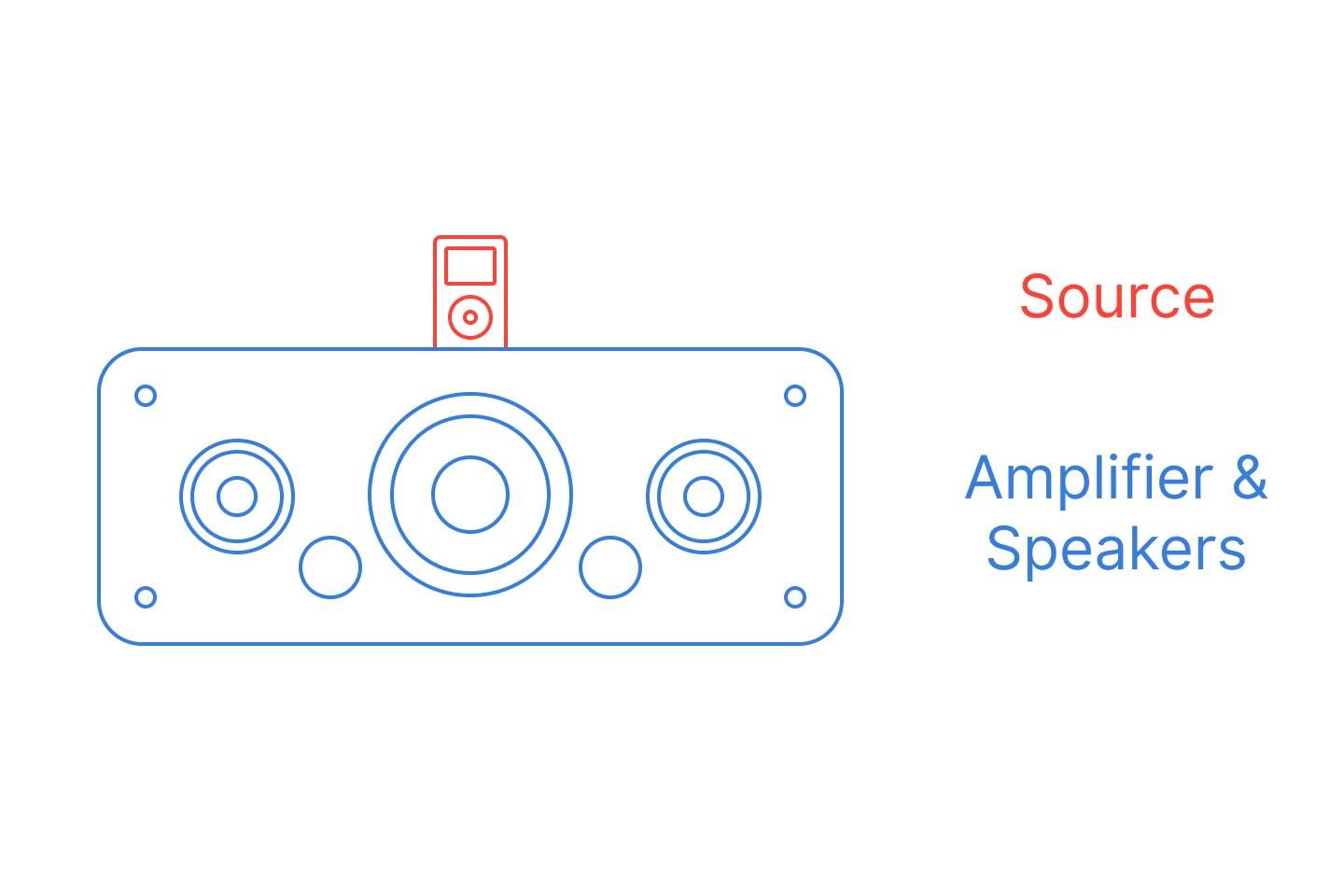
These relatively compact yet still good sounding speakers were possible because of one crucial technology, DSP, or digital signal processing.
Before DSP reached maturity, most audio circuits were analog. Circuits, built from primitive components like resistors, capacitors, and inductors, processed signals in the form of continuous waves. Designing these systems was quite time-consuming and expensive. On top of that, all these individual components added up to a bulky package.
Around the time those high-end iPod speakers were being developed, DSP had reached a point where it was viable for audiophile applications. DSP involves processing audio signals in the form of ones and zeros on computer chips. This means faster development time and smaller end products.
Unfortunately, while iPod speakers looked great and sounded great, they were short-lived because of the impending smartphone revolution.
Enter the smart speaker
Aside from killing music players like the iPod, the smartphone is essential to this story because of two technological breakthroughs it brought with it.
The first is the application and software ecosystem enabled by the smartphone and the cloud. The iPod’s paradigm, where the user experience and music are powered solely by the portable device, is no longer relevant. Now, most applications leverage a combination of onboard software and services in the cloud. This expanded access from just the songs physically stored on the device to entire music catalogs.
The second technological breakthrough brought on by the smartphone is the proliferation of smartphone components. Essentially, once smartphones became ubiquitous, the components, firmware, and operating systems that power them became cheaper and more accessible. The explosive growth of ecosystems and supply chains surrounding smartphone production means that smart devices have become drastically less expensive to produce.
Take the DSP found in iPod speakers and add the tight integration between cloud services and cheap, ubiquitous smartphone components. The result is the smart speaker. It can function on its own without needing a music player physically tethered to it. It takes what used to be a complicated and expensive multi-device system and combines it into just one box.
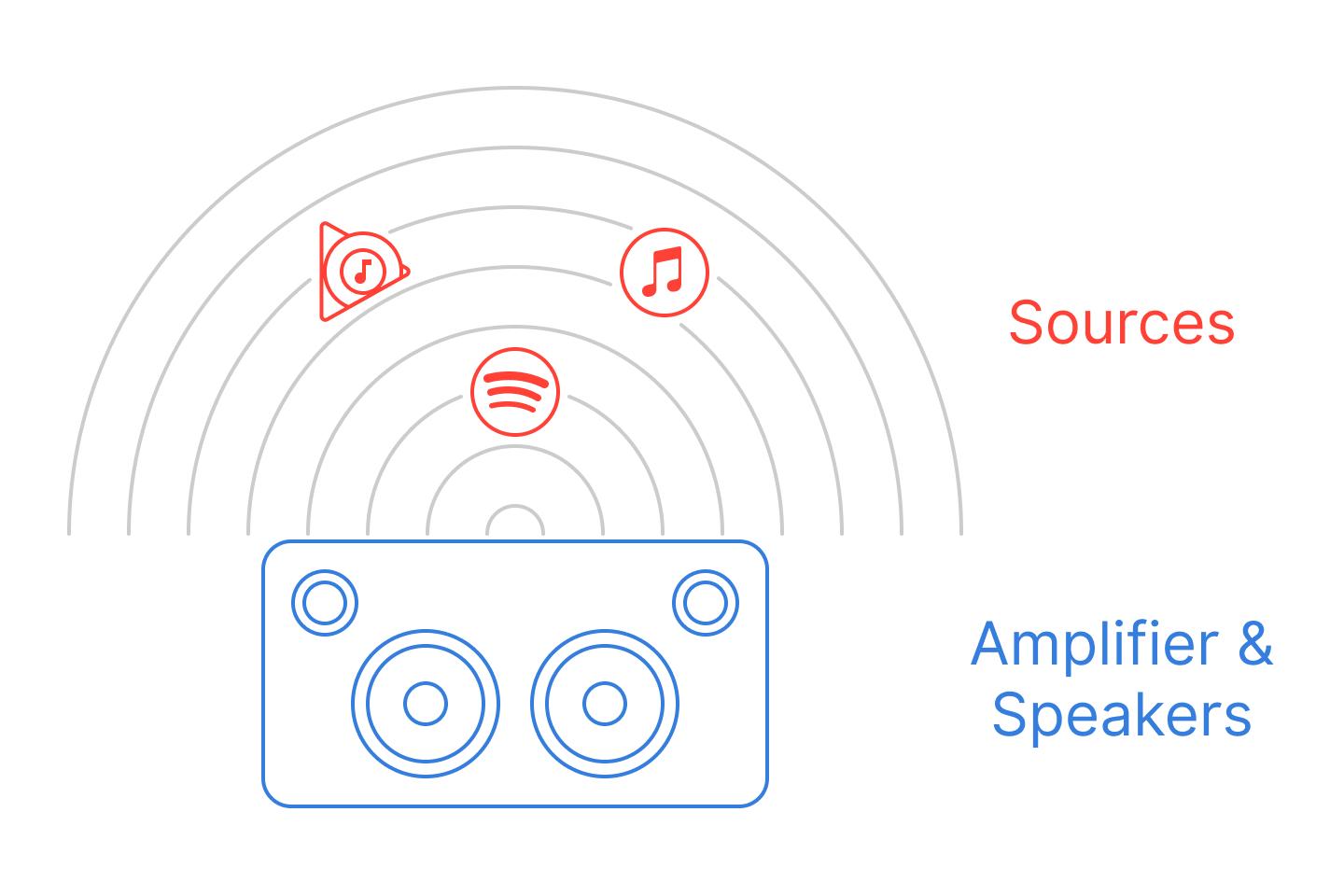
Smart speakers are at the pinnacle of home audio. They take what used to be a complicated and expensive multi device system and combine it into just one box.
The iPod Hi-Fi
A few months ago, I started looking for a speaker system that could fill my studio with music. Here were my requirements
- It must sound great.
- It should blend into its surroundings.
- It should be compact and not require a mess of cables.
- It should stream seamlessly from the web.
- No microphones.
- It should be affordable.
Smart speakers like the Apple Homepod or Google Home Max fulfill requirements one through four but fail five and six.
As I was doing my research, I came across a device that didn’t get enough attention, the Chromecast Audio. It connects via 3.5mm analog or optical to stereo speakers, allowing anything that has an audio input to stream music from the cloud. It doesn’t have any microphones and doesn’t listen to its surroundings. Furthermore, right around the time that I was buying one, Google discontinued them and put them on clearance. So, I picked one up for 15 dollars.
I then started searching for a high-end iPod speaker and found an iPod Hi-Fi for 60 dollars locally that was in pretty rough condition. I bought it and spent some time cleaning and refurbishing it.
The iPod Hi-Fi was released in 2006 and barely lasted more than a year before being discontinued. If you want to know more, I’d recommend reading Andrew Kim’s excellent writeup on Minimally Minimal.
I connected the iPod Hi-Fi to the Chromecast Audio via a 3.5mm optical cable. After a few software setup steps, I was listening to songs streaming from the cloud!
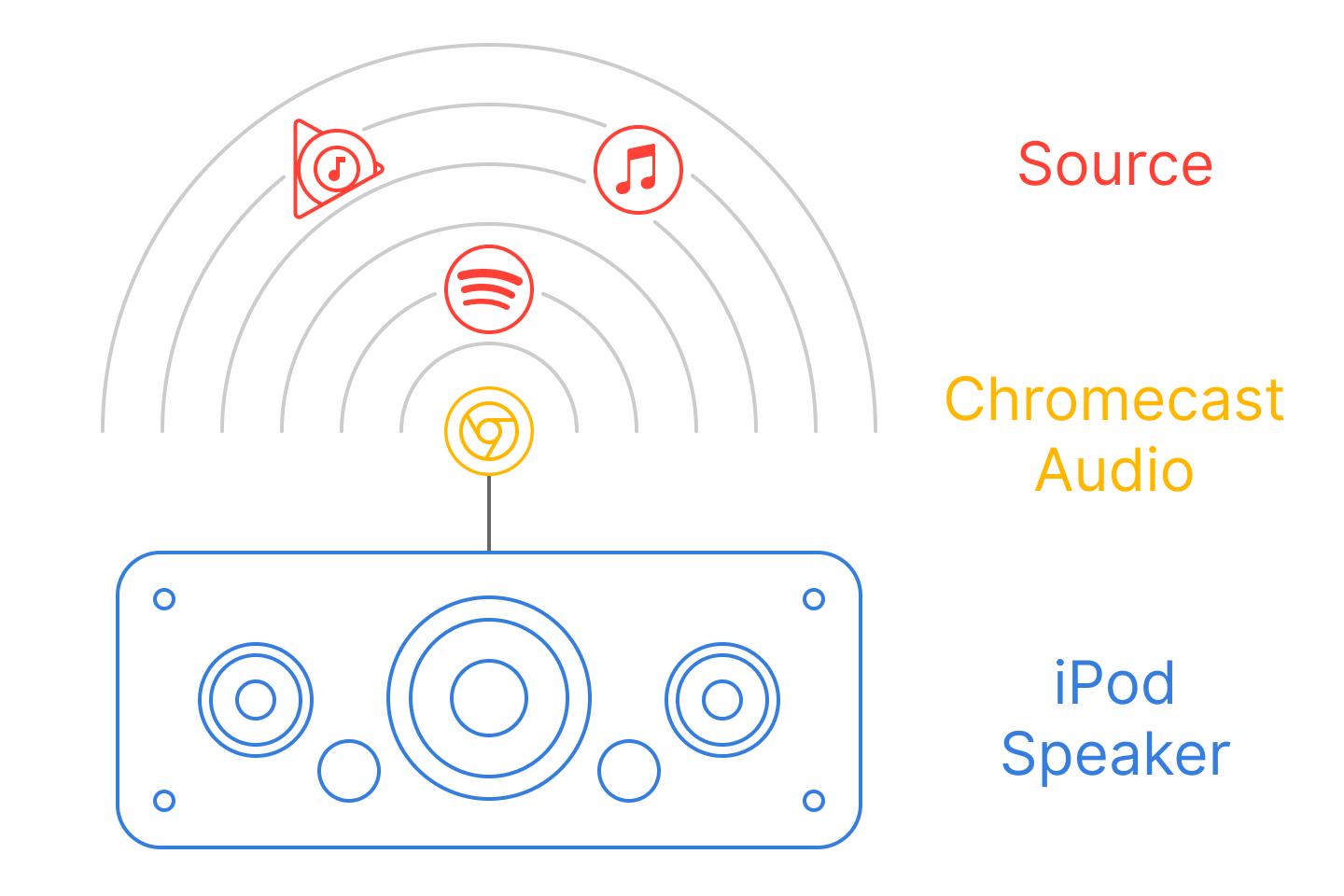
The iPod Hi-Fi is the perfect size to fill my studio with sound. The sound quality isn’t the same as if I wired the whole room up with four or more speakers around its perimeter. Still, I think the tradeoff is worth it considering the small number of cables needed.
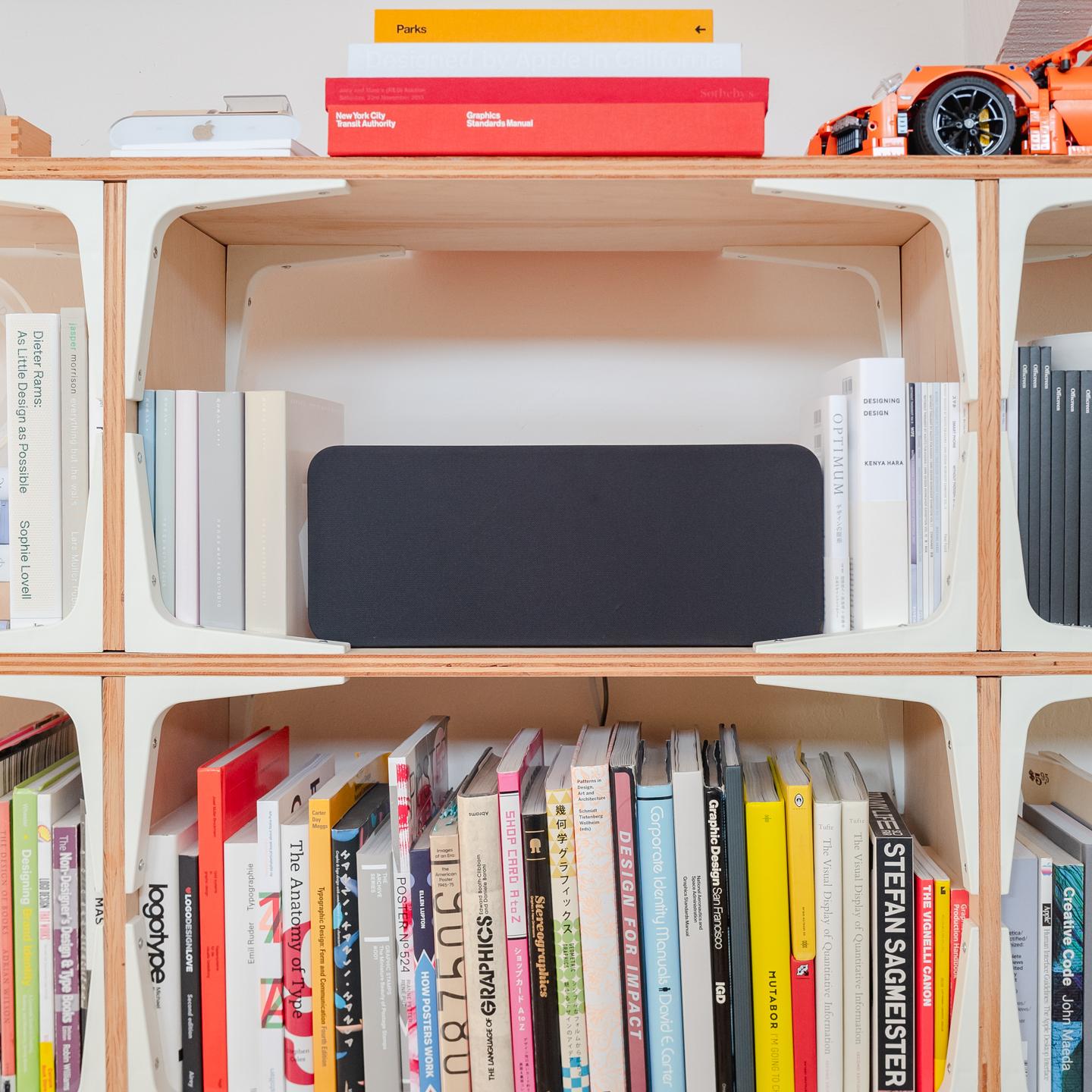
It is inconspicuous and blends right in with the books on the shelf that I built a few years back. Even with the cover off, the speakers are beautiful and understated.
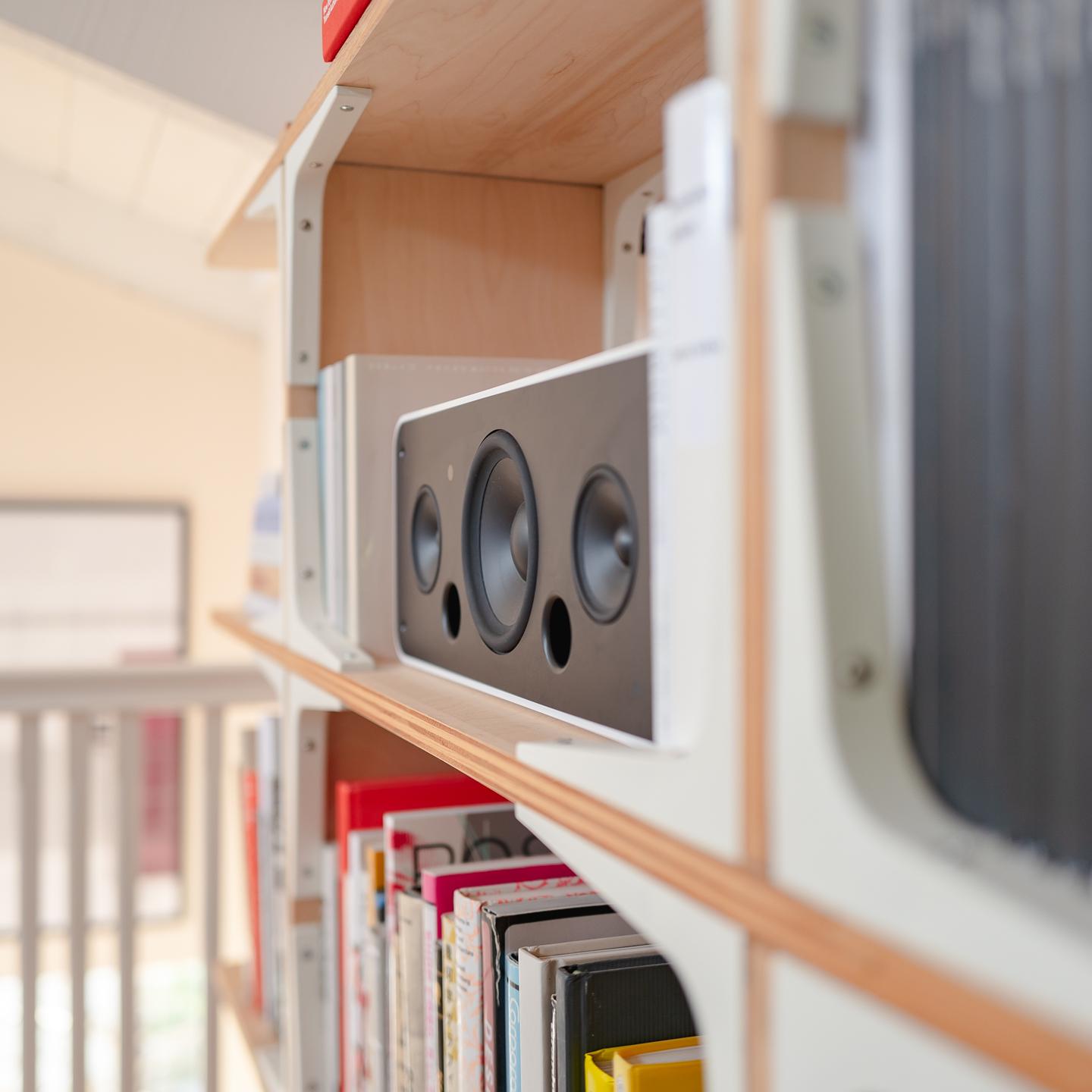
Unless you look at it from the top, you wouldn’t even know that it used to serve primarily as an iPod speaker.
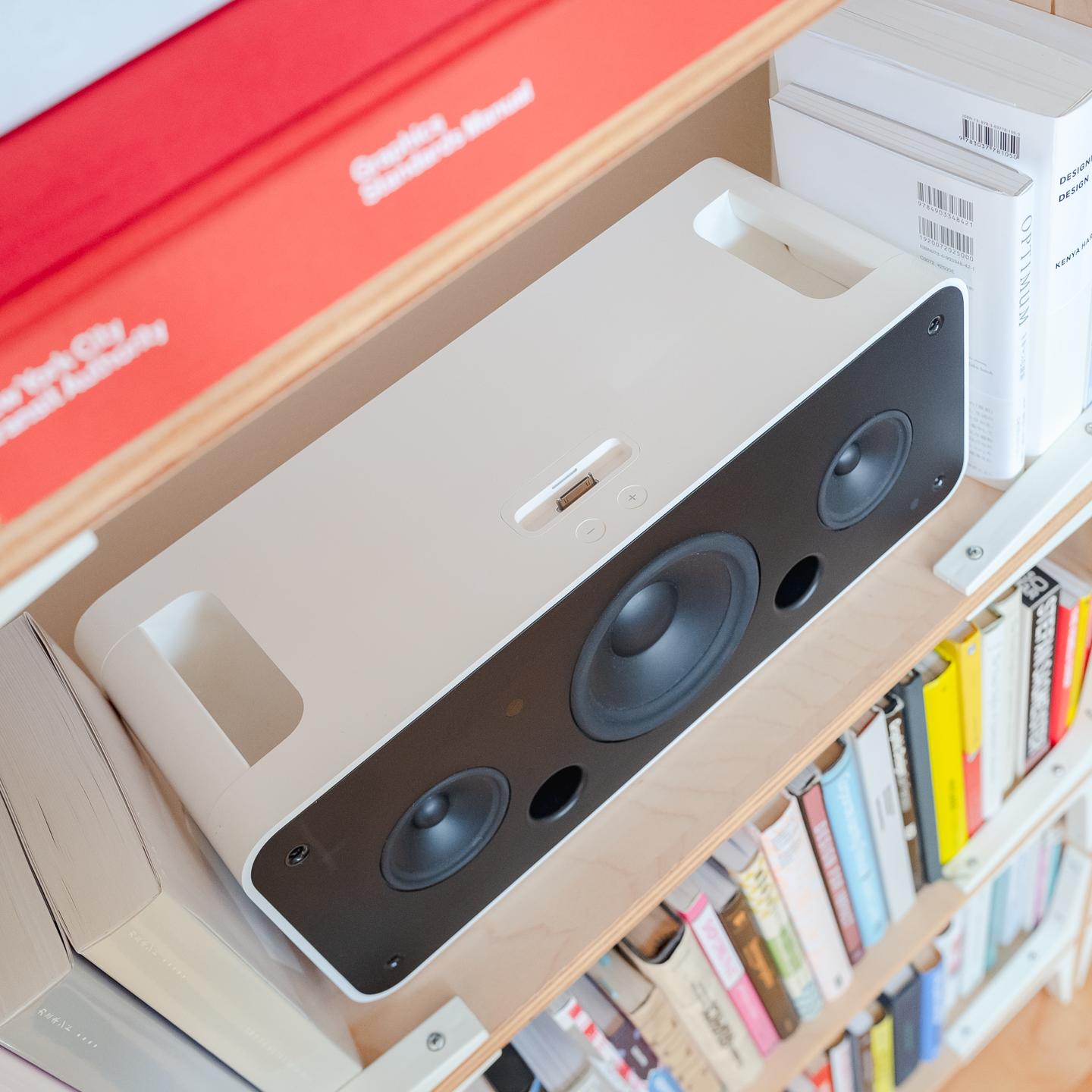
Of course, I can still charge and play music from one of my old iPods, like this iPod Mini.

The iPod Hi-Fi with the Chromecast Audio is a perfect combination for me. It has enough power to fill the room without feeling like it is struggling.
An added benefit is that in the future, when the nature of streaming services inevitably changes, I can disconnect the Chromecast Audio and connect something else.
A guide to making your own smart speaker
Pick a streaming device
The first step is to pick a streaming device. Your choice is likely going depend on which streaming services you use and any other smart devices you have in your home.
There are higher-end devices out there, but I didn’t see them worth mentioning since they are targeted at hi-fi enthusiasts.
Chromecast Audio
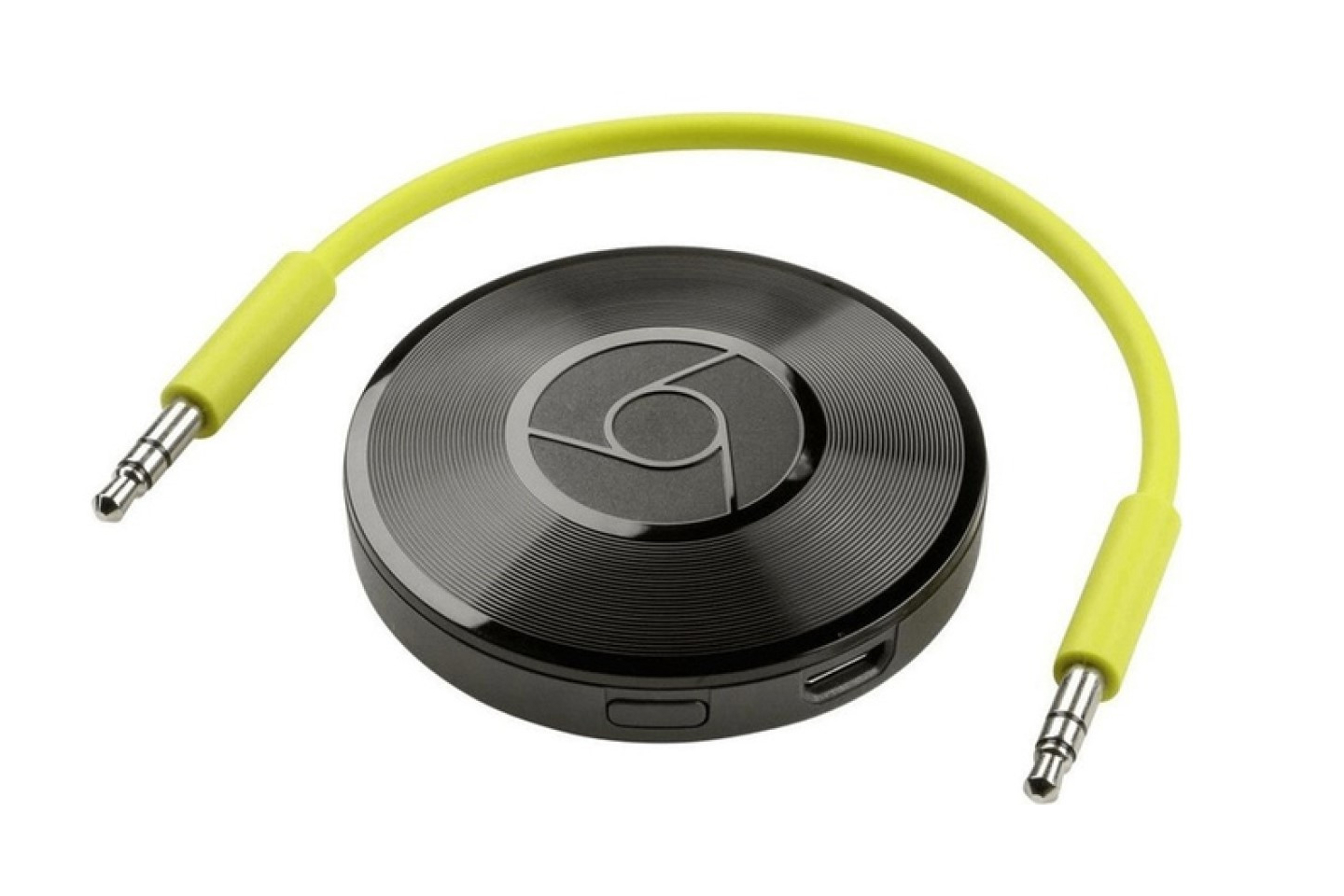
$44.99
$14.99-$68.75 (median $46.00)
While the used price of these has skyrocketed after they were discontinued, they are still powerful and simple to use. The inclusion of digital audio via TOSLINK and the ability to group them with Google Home devices into a speaker array are bonuses.
Amazon Echo Input

$34.99
$5.50-$54.99 (median $17.64)
This device can be found inexpensively on the used market since it is still in production. It can turn any speaker set into an Alexa device. However, the dedicated microphone off button means it can function just like a Chromecast Audio in streaming-only mode.
Pick an iPod speaker
The second step is to pick a suitable iPod speaker. Their used prices range from $50 to over $200. There are hundreds of iPod speakers to choose from, but I’ve included the ones that both sound and look great.
Bowers & Wilkins Zeppelin Mini
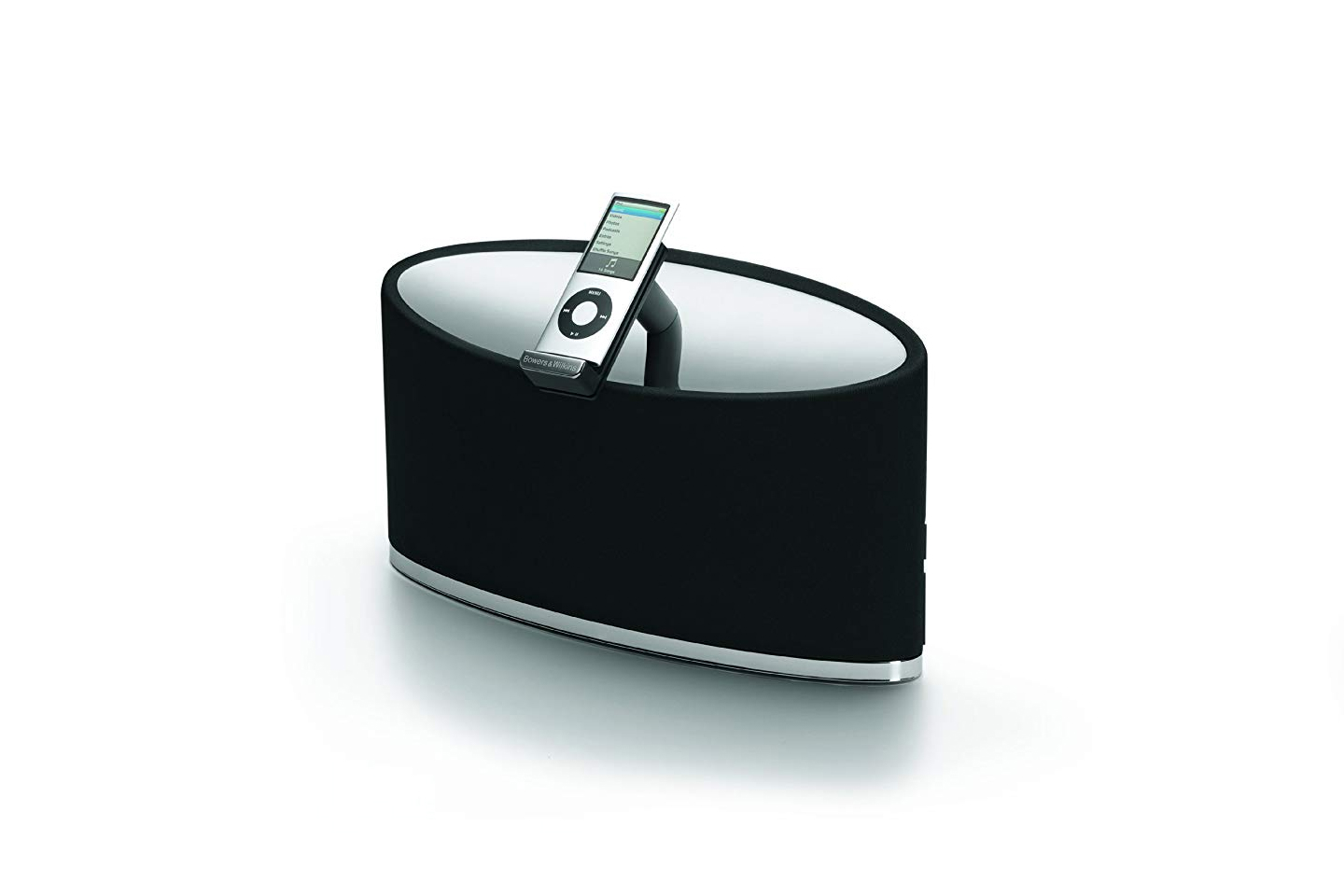
$300.00
$18.50 - $103.31 (median $49.88)
The Zeppelin Mini is the cheapest and most compact here. It probably doesn’t pack enough power to fill a medium-size room but is probably enough for a small bedroom.
iPod Hi-Fi
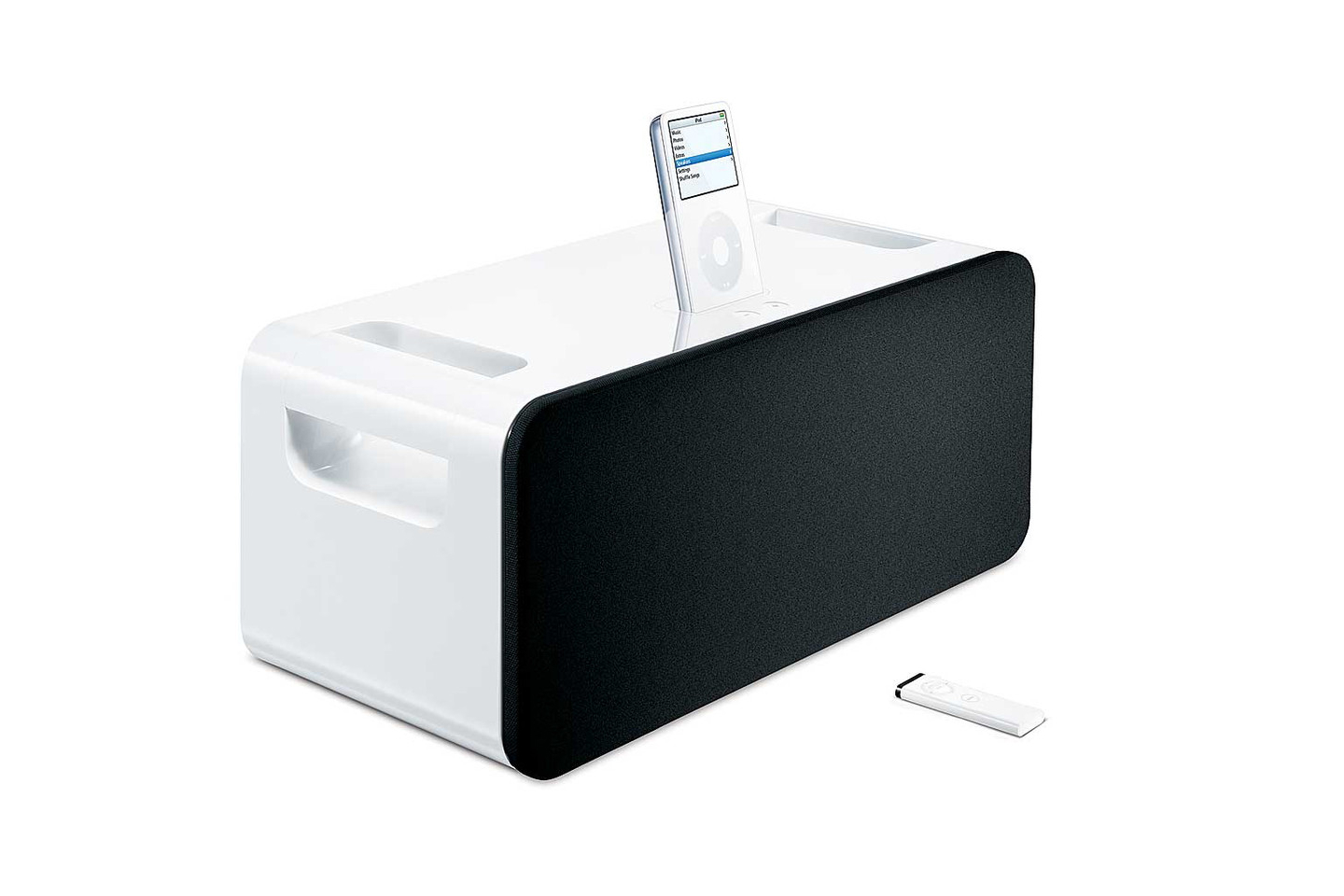
$350.00
$30.00 - $250.00 (median $69.99)
The iPod Hi-Fi is my personal favorite, given its balance of aesthetics, sound, and price. It still looks modern even though it is nearly 15 years old.
Bowers & Wilkins Zeppelin

$600.00
$99.00 - $150.00 (median $103.75)
The iconic shape of the Zeppelin is unmistakable. It’s a bit more design-forward, so it wouldn’t be able to blend in as easily as some other speakers.
Bang & Olufsen Beosound 8
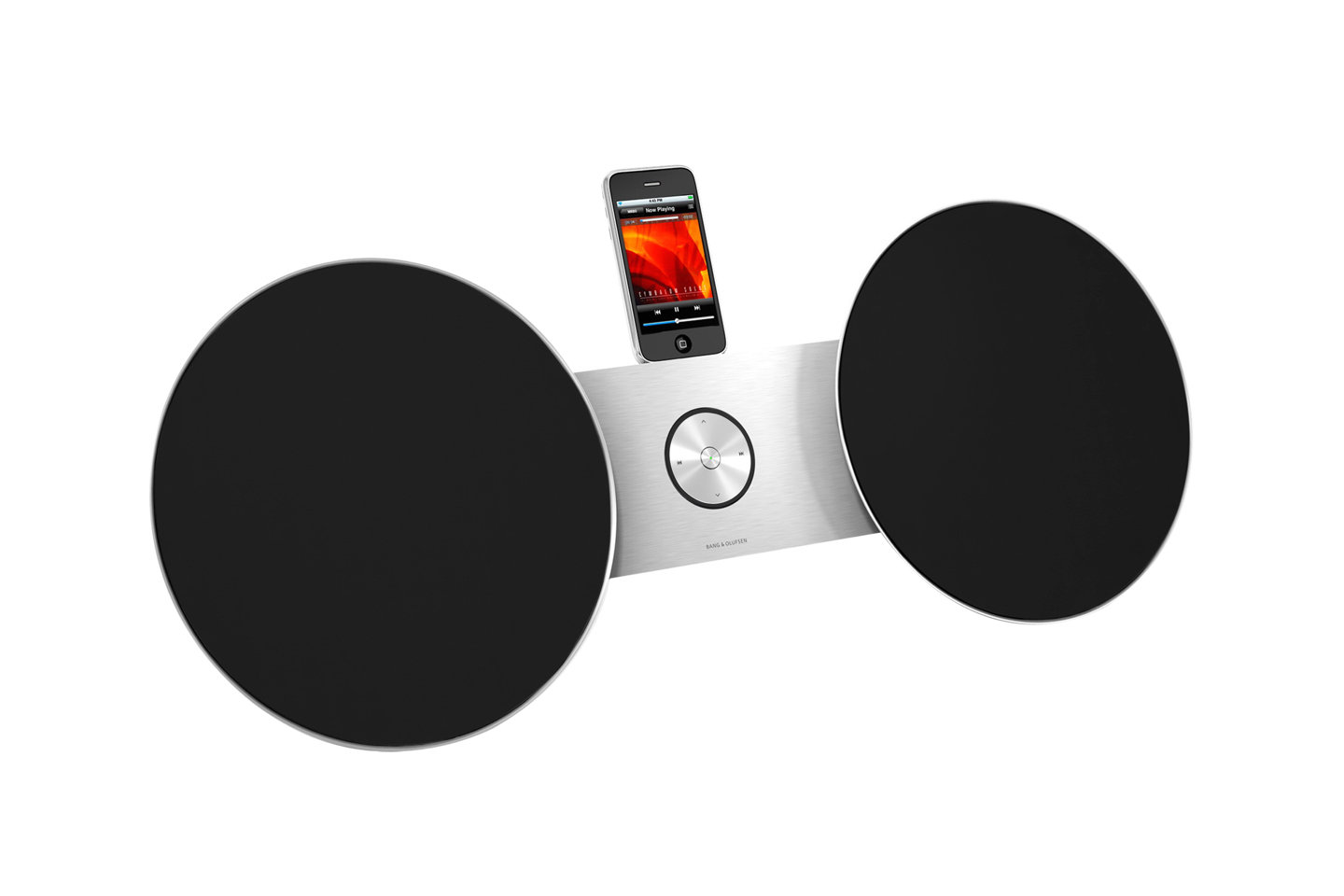
$1,000.00
$101.00 - $325.00 (median $212.50
This is one of my personal favorites, given the wide range of covers available in different colors and patterns for the round speakers.
Closing thoughts
Next time you consider buying a smart speaker system, I hope you consider putting one together with an old iPod speaker. They provide the opportunity not just to repurpose something old but also enjoy something unique.
Thanks to Q for reading drafts of this.
